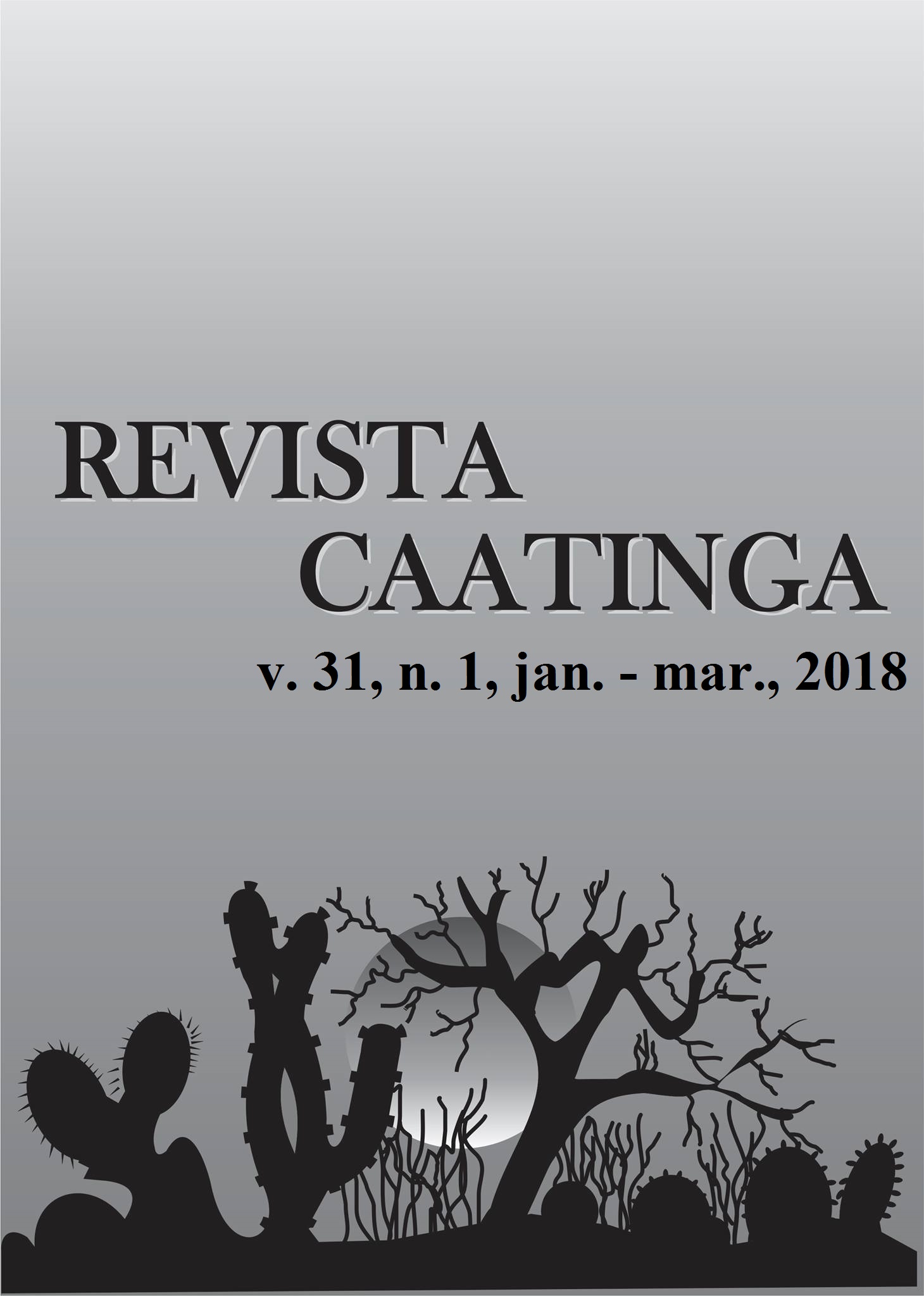DETERMINATION OF GROWTH AND NUTRIENT ACCUMULATION IN BELLA VISTA ONION
DOI:
https://doi.org/10.1590/1983-21252018v31n129rcKeywords:
Allium cepa L.. Growth analysis. Mineral nutrition.Abstract
Knowledge of the nutrient uptake by crops at different stages of growth may provide the basis for rational application of fertilizers, which may lead to reduced production costs and improved use of fertilizers by plants. Based on this knowledge, we conducted this study to determine the biomass and nutrient accumulation curve of the onion cultivar Bella Vista in a system of transplanted seedlings. The experiment was carried out in Ituporanga–SC, Brazil, by using a randomized block design with three replicates. Eleven plant collections were carried out throughout the crop cycle. The variables evaluated included plant length; total dry biomass of leaves, bulbs, and roots; and concentrations of macro- and micronutrients. The maximum dry biomass accumulation in the shoots and bulbs at 140 days after transplanting (DAT) was 4.26 and 27.41 mg per plant, respectively, which contributed to 13% and 85% of the whole plant dry biomass at the end of the cycle, respectively. Potassium (K, 521.6 mg) was accumulated in the largest quantity per plant, followed by nitrogen (N, 465.7 mg), calcium (Ca, 253.3 mg), sulfur (S, 109.0 mg), magnesium (Mg, 86.9 mg), and phosphorus (P, 76.5 mg). The micronutrient accumulation was as follows: iron (Fe, 6,227.5 µg), boron (B, 902.3 µg), zinc (Zn, 573.7 µg), manganese (Mn, 573.7 µg), and copper (Cu, 241.4 µg).Downloads
References
AUGOSTINHO, L. M. A. et al. Acúmulo de massa seca e marcha de absorção de nutrientes em mudas de goiabeira ‘Pedro Sato’. Bragantia, Campinas, v. 67, n. 3, p. 577-585. 2008.
BETTONI, M. M. et al. Extração e partição de nutrientes em cebola cultivada no sistema orgânico. Revita Ceres, Viçosa, v. 63, n. 5, p. 683-690. 2016.
CAKMAK, I.; HENGELER, C.; MARSCHNER, H. Changes in phloem export of sucrose in leaves in response to phosphorus, potassium and magnesium deficiency in bean plants. Journal of Experimental Botany, Lancaster, v. 45, n. 9, p. 1251-1257. 1994.
CASTOLDI, R. et al. Crescimento, acúmulo de nutrientes e produtividade da cultura da couve-flor. Horticultura Brasileira, Brasília, v. 27, n. 4, p. 438-446. 2009.
CECÍLIO FILHO, A. B. et al. Crescimento da cebola em função de doses de nitrogênio, potássio e da população de plantas em semeadura direta. Horticultura Brasileira, Brasília, v. 27, n. 1, p. 49-54. 2009.
CHARLO, H. C. O. et al. Growth analysis of sweet pepper cultivated in coconut fiber in a greenhouse. Horticultura Brasileira, Brasília, v. 29, n. 3, p. 316-323. 2011.
CHARLO, H. C. O. et al. Accumulation of nutrients in sweet peppers cultivated in coconut fiber. Horticultura Brasileira, Brasília, v. 30, n. 1, p. 125-131. 2012.
HALVORSON, A. D. et al. Nitrogen fertilizer use efficiency of furrow-irrigated onion and corn. Agronomy Journal, Madison, v. 24, n. 3, p. 442-449. 2002.
KURTZ, C.; ERNANI, P. R. Produtividade de cebola influenciada pela aplicação de micronutrientes. Revista Brasileira de Ciência do Solo, Viçosa, v. 34, n. 1, p. 133-142. 2010.
KURTZ, C. et al. Crescimento e absorção de nutrientes pela cultivar de cebola Bola Precoce. Horticultura Brasileira, Brasília, v. 34, n. 2, p. 279-288. 2016.
MALAVOLTA, E.; VITTI, G. C.; OLIVEIRA, S. A. Avaliação do estado nutricional das plantas: princípios e aplicações. 2. ed. Piracicaba, SP: POTAFOS, 1997. 319 p.
MAY, A. et al. Acúmulo de macronutrientes por duas cultivares de cebola produzidas em sistema de semeadura direta. Bragantia, Campinas, v. 67, n. 2, p. 507-512. 2008.
NASREEN, S.; HAQ, S. M. I.; HOSSAIN, M. A. Sulphur effects on growth responses and yield of onion. Asian Journal of Plant Sciences, Dubai, v. 2, n. 12, p. 897-902. 2003.
PÔRTO, D. R. Q. et al. Acúmulo de macronutrientes pela cebola ‘Optima’ estabelecida por semeadura direta. Horticultura Brasileira, Brasília, v. 24, n. 4, p. 470-475. 2006.
PÔRTO, D. R. Q. et al. Acúmulo de macronutrientes pela cultivar de cebola "Superex" estabelecida por semeadura direta. Ciência Rural, Santa Maria, v. 37, n. 4, p. 949-955. 2007.
RODRIGUES, G. S. O. et al. Qualidade de cebola em função de doses de nitrogênio e épocas de plantio. Revista Caatinga, Mossoró, v. 28, n. 3, p. 239-247. 2015.
SANTOS, H. G. Sistema brasileiro de classificação de solos. Rio de Janeiro, RJ: EMBRAPA-SPI, 2006. 306 p.
VIDIGAL, S. M.; PEREIRA, P. R. G.; PACHECO, D. D. Nutrição mineral e adubação de cebola. In: LACERDA, V. (Ed.). Informe Agropecuário, Belo Horizonte, v. 23, n. 218, p. 36-50, 2002.
VIDIGAL, S. M.; MOREIRA, M. A.; PEREIRA, P. R. G. Crescimento e absorção de nutrientes pela planta cebola cultivada no verão por semeadura direta e por transplantio de mudas. Bioscience Journal, Uberlândia, v. 26, n. 1, p. 59-70. 2010.
TEDESCO, M. J. et al. Manual de adubação e de calagem para o Estado do Rio Grande do Sul e Santa Catarina. Porto Alegre, RS: SBCS/Núcleo Regional Sul, UFRGS, 2004. 400 p.
TRANI, P.; BREDA JÚNIOR, J. M.; FACTOR, T. L. Calagem e adubação da cebola (Allium cepa L.). Campinas, SP: Instituto Agronômico de Campinas, 2014. 35 p.
Downloads
Published
Issue
Section
License
Os Autores que publicam na Revista Caatinga concordam com os seguintes termos:
a) Os Autores mantêm os direitos autorais e concedem à revista o direito de primeira publicação, com o trabalho simultaneamente licenciado sob a Licença Creative Commons do tipo atribuição CC-BY, para todo o conteúdo do periódico, exceto onde estiver identificado, que permite o compartilhamento do trabalho com reconhecimento da autoria e publicação inicial nesta revista, sem fins comerciais.
b) Os Autores têm autorização para distribuição não-exclusiva da versão do trabalho publicada nesta revista (ex.: publicar em repositório institucional ou como capítulo de livro), com reconhecimento de autoria e publicação inicial nesta revista.
c) Os Autores têm permissão e são estimulados a publicar e distribuir seu trabalho online (ex.: em repositórios institucionais ou na sua página pessoal) a qualquer ponto antes ou durante o processo editorial, já que isso pode gerar alterações produtivas, bem como aumentar o impacto e a citação do trabalho publicado (Veja O Efeito do Acesso Livre).







